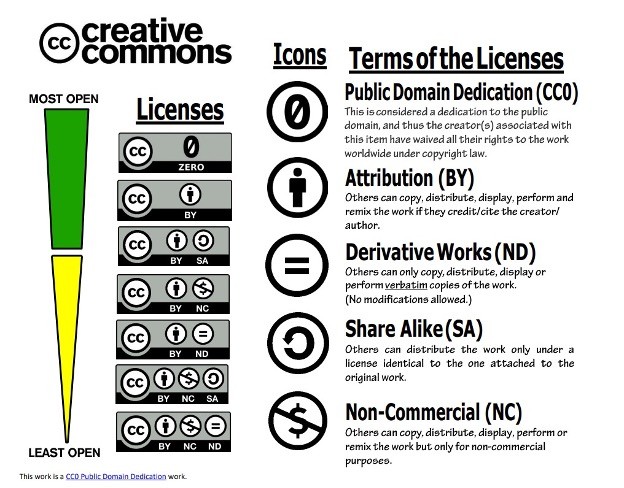What is an Open Educational Resource?
Open Educational Resources (OER) are learning, teaching, and research resources that reside in the public domain or have been released under an explicitly open intellectual property license that permits others to revise, remix, and redistribute the material. OER databases provide access to content in a variety of common formats such as .pdf, .csv, .txt, .html and more!
What makes an OER different from a library-provided database?
In short: money! Content provided to you through Fairmont State University's library is proprietary. This means we pay subscription fees to ensure you have access to scholarly content that supports your learning and academic success. Your Library's databases are always the best place to start your research, because the majority of published scholarly and peer-reviewed content is only accessible through these database subscriptions. However, sometimes the content you're looking for isn't accessible through our databases due to the lack of a subscription or cost-prohibitive subscription models (which vary by vendor and subscription tier). OER content with open licenses allows you to use, adapt, and share materials freely without worrying about costs or legal issues.
How do I identify an OER?
An OER will meet all of the criteria listed below:
Creative Commons is a global nonprofit organization that enables the sharing and reuse of creative works and knowledge by providing free legal tools. They developed the Creative Commons licenses, which give everyone from individuals to large institutions a standardized way of granting the public permission to use their creative or academic works under copyright law. The presence of a Creative Commons license on a copyrighted work answers the question: what can I do with this work?

Use this infographic to understand the various CC licenses and their terms. This work is a CC0 Public Domain Dedication.
The right to publicly (e.g. in class or on a website) use the original version of a material.
Revise
The right to edit/modify a material to improve it and/or adapt its contents for a specific purpose (e.g. course content or translation to another language).
Retain
The right to create, own, and control copies of the material (e.g. download and store it to your computer or platforms like Blackboard).
Remix
The right to combine two or more materials to create something new (e.g. developing course packets or editing content to adapt for different learning levels).
Redistribute
The right to share copies of original, revised, or remixed materials with others (e.g. posting to Blackboard or emailing the material).
Attribution
Crediting the author and noting the source and the license. Note: Just because something has an open license does not mean you do not have to cite the material when you use it for your course work.
OER
Freely and publicly available teaching, learning, and research resources that reside in the public domain or have been released under an explicit intellectual property license which permits others to revise, remix, and redistribute the material.
Scholarly content that is free to read online, use as-is, and is openly published so you don't have to pay. However, open access content may come with licensing stipulations you need to be aware of that do not allow you to revise, remix, or redistribute the material.
Free to Access
Online content that is available with no cost. You can view it or use it as-is, but you can't revise, remix, or redistribute the content without permission from the content's owner. This content is usually identifiable by locating a © (copyright), an "All Rights Reserved" disclaimer, or explicit copyright statement.
| Feature | Open Educational Resources (OER) | Open Access (OA) | Free-to-Access Content |
|---|---|---|---|
| 💲 Free to Use | ✅ Yes | ✅ Yes | ✅ Yes |
| 🛠 Can Modify/Remix | ✅ Yes (with license) | ⚠️ Sometimes (check license) | ❌ No |
| 🔁 Can Redistribute | ✅ Yes | ⚠️ Sometimes | ❌ No |
| 🎓 Educational Purpose | ✅ Primary purpose | ✅ Often | ⚠️ May vary |
| 🧾 Requires License Check | ✅ Always check license | ✅ Always check license | ✅ Usually not modifiable |
ChatGPT (2025, May 11). Quick comparison chart of Open Educational Resources (OER), Open Access, and Free-to-Access Content [AI-generated chart]. OpenAI. chatgpt.com